- Pictures
Pier Parade
Sunday Stroll
Boatman's Rooms
Beach Street
If Not, Why Not?
-
-
-
|
|
The picture above shows
Beach Street as seen from the end of the pier. The building on the
far left is the Royal Hotel, with the Star & Garter Hotel just to
the right and behind it.
The picture extends to somewhere near Silver Street, just beyond the
Pelican. There were once as many as 7 or 8 public houses and
hotels in this short stretch of road. Those on the side nearest
the sea were all demolished by the Council in the late 19th century (with the
exception of the Royal Hotel) to provide a promenade. Several
others (including the Pelican) are now private houses.
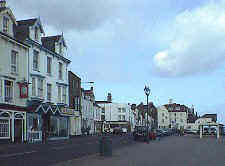
Pier Parade looking north - Royal Hotel in the background
This view looking towards the Royal Hotel from the pier entrance is
almost unchanged in 60 years, as can be seen by the picture below, which
shows a family outing on a summer Sunday afternoon around 1938.
The couple are June's great grandparents, Richard and Elizabeth Sparnon,
with one of their grandchildren. They were probably on their way
to the cemetery to put flowers on a family grave.
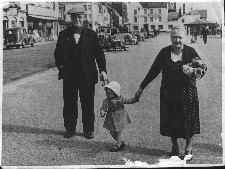
A Sunday afternoon stroll along the promenade
Seen below, the fishing boats "IF NOT" and "WHY
NOT" were for many years a familiar landmark on the beach opposite
the Timeball Tower. |
|
On the corner of
Exchange Street, opposite the Royal Exchange, stands the Boatman's
Reading Rooms, built in 1884 (now a private dwelling). The small
square plaque
on the wall to the right of the window reads:
- "ARNOLD CAWTHROW
- 1913 - 1993
- Big Chief I-SPY
- lived here
- odhu / ntinggo"
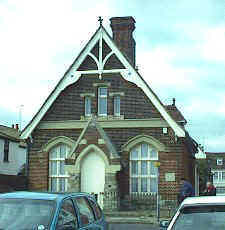
Boatman's Reading Room
The building was originally occupied by the Missions to Seamen; the
Chaplain, the Rev. T.S. Treanor, is
commemorated by another plaque affixed below the one mentioned above.
The only building left on the beach side of the seafront is the Royal
Hotel, which can be seen in the far distance in the picture below.
With the exception of the rather ugly block of flats in the foreground
(and the row of parked cars!) this view probably hasn't much changed in
almost a hundred years.
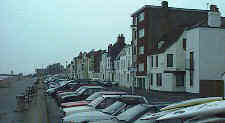
Beach Street looking south from the Rowing Club
In the last century, there were a number of buildings that backed on
to the sea, including the Crown Hotel and "Seagirt".
There were also a number of capstan grounds, where boats were hauled
up. Unfortunately, the sea is not a very good neighbour, and all
except the Royal Hotel have long since disappeared, mostly demolished by
the Council to provide space for a Promenade.
|
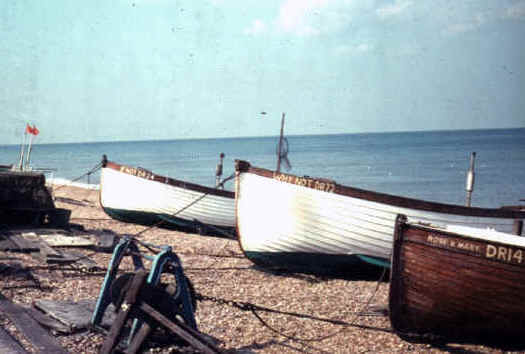
"If Not", "Why Not" and "Rose &
Mary" on the beach opposite the TImeball Tower
This short extract from the first edition of the Deal, Walmer and
Sandwich Mercury (2nd June 1865 paints an idyllic picture of Deal
in the middle of the last century:
"To persons unacquainted with the locality and visiting
Deal at this season of the year, and more particularly within this last
month, a greater part of which our roadstead has presented the
appearance of one vast mirror, whilst on the Beach there has scarcely
been a ripple sufficient to move a pebble stone. The water
has also been of such transparency that the fish could be distinctly
seen and also the bottom as far from the shore as the end of our new
pier, to the great amusement and attraction of those who stroll thither
to spend a quiet half hour: ..."
This was, of course, in the days before oil-fired ships and sewage
outfalls polluted the waters around our coastline. We still get
days when the sea is calm, but you can rarely see the bottom a yard or
two from the shore! |





